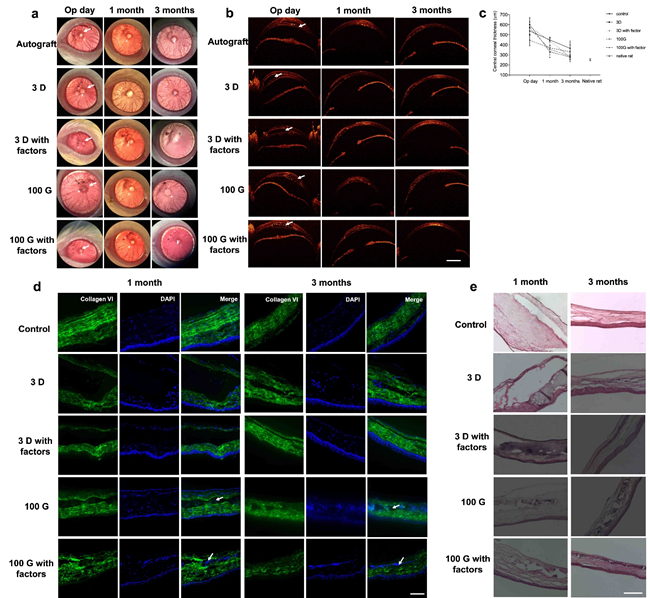The Shengli Mi and Wei Sun group from Tsinghua SIGS recently obtained significant progress in the field of inductive regeneration of corneal stroma. The related achievement was published in Nature Communications entitled “Fiber reinforced GelMA hydrogel to induce the regeneration of corneal stroma” on March 18, 2020.
As an essential tissue in the visual system, the cornea supplies most optical power for the eye and protects the intraocular microstructure and tissues. However, injuries, infections, and congenital and degenerative conditions may damage its function, making corneal damage the second leading cause of blindness. Thus, it is essential and urgent to develop therapeutic scaffolds to corneal transplantation using biofabrication approaches, to replace or induce self-regeneration of the corneal tissue.
Nowadays, the main challenge in corneal tissue regeneration lies in recreating the complex structure of the corneal stroma, while maintaining the phenotype of keratocytes as they easily transform into fibroblasts.
To address these challenges, the Mi & Sun group have been using near-field electrospinning technique to fabricate a grid poly (ε-caprolactone)-poly (ethylene glycol) sub-microfibrous scaffold. When combined with a GelMA hydrogel, a 3 D fiber hydrogel construct is obtained, with fiber spacing that simulates a stromal structure most similar to the native cornea.

Fabrication and characterization of the fiber hydrogel
The group also examined various effects of the topological structure (3 D fiber hydrogel, 3 D GelMA hydrogel, and 2 D culture dish) with different chemical factors. Based on the results, researchers put forward an optimal group of topological structure and chemical factors that can maintain the keratocyte phenotype and induce regeneration of damaged corneal stroma.

Fiber hydrogel engraftment and stromal matrix synthesis and regeneration in rat cornea in vivo
The first authors of this paper are Bin Kong from Tsinghua-Berkeley Shenzhen Institute (TBSI), and Yun Chen and Rui Liu from Tsinghua SIGS. The corresponding authors of this paper are Associate Prof. Shengli Mi and Prof. Wei Sun. This study was supported by the National Key Research and Development Program of China (No. 2016YFC1100100).
Article link: https://doi.org/10.1038/s41467-020-14887-9.
Written by Bin Kong
Edited by Karen Lee


